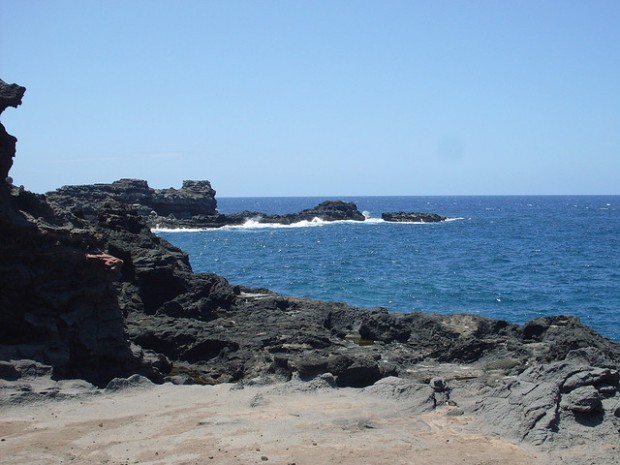By Roxanne Bichard
If you’re looking for a destination with an amazing green vibe, it’s hard to get any better than Maui, Hawaii’s “Valley Isle”. Not only are Maui’s jaw-dropping landscapes some of the most sought-after on the planet, the island also has a local attitude that reflects deeply rooted values of respect for the environment. With Maui Villas spread across the island, there are plenty of places to stay to see all of the local sites. Traditional Native Hawaiian principles still shine through Hawaiian culture today, including the integral concept of “malama aina” – caring for the land. Maui’s combination of oceans, mountains, rainforest and coral reef habitats make it a top destination for ecotourism.
1 – Organic Farms of Maui: Pineapples, Coffee, Macadamia Nuts and More
If you’re looking to reduce your carbon footprint on your vacation, supporting Maui’s organic farms is a great start. The benefits of local organic farms are immeasurable, reducing carbon emissions, supporting local communities and promoting sustainable agricultural practices. Maui is very big on the “Farm to Table” experience, delivering quality produce to local homes and restaurants.
Many of Maui’s organic farms are situated on the slopes of the ancient Haleakala volcano in upcountry Maui, and their crops thrive due to the rich volcanic soil. ONO organic farms, Kupa’a Farms and O’o Farms are just a few great places to spend some time sampling the natural harvest. The farms offer a vast selection of vegetables and exotic fruit including pineapple, lychee, mango, pomegranate, kumquat, passion fruit, guava, avocado… and the list goes on! For a complete list of Hawaiian organic farms, consult the Hawaii Organic Farmer’s Association.
Nuts over Macadamia Nuts: Although macadamia nuts are not native to Hawaii, Hawaii now grows much of the world’s supply of this delicacy, which are delicious salted or toasted! There are many small macadamia farms on the island of Molokai, a largely unspoiled island right off of Maui (Try Purdy’s Macadamia Farm).
Beans, Beans and More Beans: Maui’s temperate climate and mineral-rich volcanic soil allow it to produce some of the tastiest coffee in the world. Many organic farms in Maui grow their own coffee, and Shim Coffee Farm even offers tours of the coffee-making process. Chocolate lovers will also appreciate that Hawaii is the only place in the U.S. that grows another worshipped bean: cocoa!
2 – Hawaii Regional Cuisine – An Emphasis on Fresh Local Produce
Restaurants across Maui rely on local products more than ever, which is not only great for the environment and the local economy but also for your taste buds! While Hawaii is still quite heavily reliant on large distributors and imports, many restaurants now rely on cattle raised on the island’s upland pastures, and fruits and vegetables grown on the local volcanic soil. When dining in Maui, look for whatever is local on the menu, whether it’s local fish or fresh island produce.
The culinary movement of Hawaiian Regional Cuisine started in the early nineties and three of the original award-winning chefs that started the movement have restaurants in Maui: Beverly Gannon, Mark Ellman and Peter Merriman. Make sure to try out some of their restaurants which rely on produce purchased daily from local island farmers: Hali‘imaile General Store, Joe’s, Gannon’s, Maui Tacos, Mala Ocean Tavern, Merriman’s Kapalua and Monkeypod Kitchen.
If you’re cooking your own meals, you can always do your grocery shopping at Mana foods, a renowned health food store that emphasizes island grown and organic fruit, grass-fed island beef, local seafood, organic chicken and even caters to vegan and wheat-free diets.
3 –Choose Environmentally Responsible Eco Adventures
Geographic isolation makes Maui and other Hawaiian islands host to a diverse range of species of plants and animals endemic to the region. Many of these animal and plant species are either endangered or threatened, including green sea turtles, humpback whales and Hawaiian monk seals. Fortunately, there are many ways to enjoy activities in Maui’s without being a threat to its rich biodiversity.
Maui is famous for its humpback whales that migrate to its warm, protected waters every winter. The Pacific Whale Foundation is a non-profit organization dedicated to educating the public about oceans and saving whales from extinction. With ongoing research studies in Hawaii, they offer some of Maui’s best educational whale watching, snorkeling and award-winning ocean eco-adventures while prioritizing the safety and security of the animals.
Small-scale tour companies are key to gaining an eco-friendly appreciation of Maui’s rainforest habitats. “Hike Maui” was rated the eco-friendly hike in Maui in 2009, and offers some of the most amazing rainforest, volcano and waterfall hikes on the island. Their knowledgeable guides are passionate about the islands and are there to educate you about Hawaiian botany, geology, culture and history.
For a fun, environmentally conscious activity, try Skyline Eco-adventures, Hawaii’s only carbon-neutral zipline operator. The Haleakala and Ka’anapali adventures let you soar across volcanos, forests and valleys, an exhilarating way to experience incredible views of Maui’s landscape.
Maui is home to some of the healthiest coral reefs in the Hawaiian Islands, though recent studies show that they are declining. If you’re going to snorkel or kayak in Maui, try Maui Eco Tours, which sticks to small groups and makes sure their excursions do not disturb the fragile ecosystem. And of course, always remember your reef-safe sunscreen!
For more small-scale, eco-friendly tours and locations, contact the Hawaii Ecotourism association.
Hawaii is believed by the locals to be filled with Mana, a powerful force in every place, rock and creature. We hope this eco-friendly Maui activity guide gives you an idea of where to start so that you can connect with the energy of this amazing island!
Roxanne Bichard is a travel writer with Luxury Retreats, a company specializing in villas in Maui from Luxury Retreats. A world traveler, she has glimpsed everything from camels to belugas in the warmest and coldest of climates.

